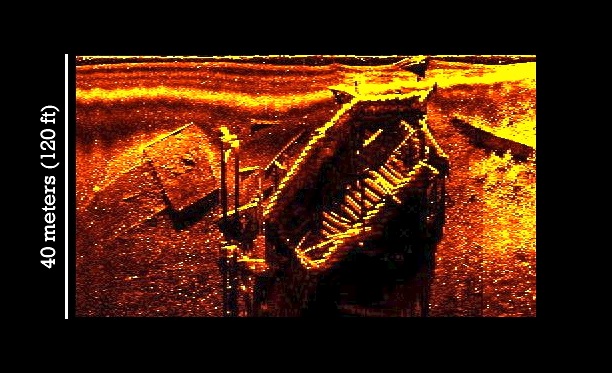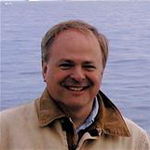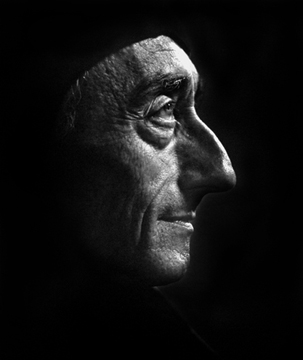In the sultry late summer of 1781, General Cornwallis, Commander of British forces in Virginia, was holed up in Yorktown building fortifications to secure a deep-water port for the Royals, and thus control of the strategically critical Chesapeake Bay. General Washington, in consultation with French allies, dispatched a French fleet to stop them, a series of intrigues, chases, and a sea battle ensued, and — long story short — the French fleet held off the British ships, Cornwallis was left without reinforcements and forced to surrender in September, and the American Revolution was essentially all over but the shouting. The rest, as they say, is history. During the melee several British ships were scuttled in the River off Yorktown to keep them out of enemy hands, and some have been missing for over two centuries.
Until now.

The shifting sands (technically marine sediments) of time have recently revealed some of the long-lost ships, which are visible as plain as day by sonar, lying on the bottom of the York River (see photo at right). Dr. Mark Patterson of VIMS, together with Dr. Dave Niebuhr of the Watermen’s Museum, have launched a cool new project to map the wrecks with underwater robots, and the help of local schoolkids [That’s Mark with his robot Fetch! above — though the idyllic scene is not the York River, I can assure you.]. From the VIMS website:
“The project, funded by the National Science Foundation, will allow the students to pilot unmanned robotic submarines in an attempt to monitor the conservation status of shipwrecked vessels scuttled by Lord Cornwallis during the Battle of Yorktown in 1781.The project capitalizes on the recent discovery in the York River of two new shipwrecks from the Yorktown battle and siege. The researchers believe the previously buried wrecks were uncovered by strong currents during recent tropical storms, and are concerned that their exposure on the bayfloor may lead to rapid degradation. By mapping the wrecks’ outlines, the students will help conservators monitor their condition and take preventive measures if necessary.”

Since lead scientist and underwater pioneer Mark Patterson’s office is just around the corner from mine (and, coincidentally, following on the heels of Miriam Goldstein’s great essay on becoming a marine biologist at Deep-SeaNews), SeaMonster was able to land . . .
The Exclusive Interview:
SeaMonster: I understand you and your robot team will be exploring the wreck of Admiral Cornwallis’s ship that went down just offshore of VIMS here, where the decisive battle of the American Revolution was fought. What’s your plan?
Mark Patterson: We will be using two kinds of robots, operated by school kids, to help monitor the condition of these national treasures. One of the robots is a tethered vehicle called a Remotely Operated Vehicle (ROV), essentially a swimming video camera that provides immediate “telepresence” on the bottom of the river. In other words,the kids will see a real-time video image of the state of the wreck. The other kind of robot we will be using is a free-swimming robot, called an Autonomous Underwater Vehicle (AUV). This robot will make short dives going past the shipwrecks, imaging them with something called a sidescan sonar Sidescan sonars make high definition pictures with sound, much like a medical ultrasound can make a picture of an internal organ. When the robot returns and we download the images, the kids will get a larger view of the wreck than that viewable on video in the highly murky water of the Chesapeake Bay.

SeaMonster: How will your 21st century technology yield new insights on the 18th century?
Mark: Robots like these are being used increasingly in marine archeology. They don’t get tired like a person would diving on the wrecks, and they can work under conditions when it wouldn’t be safe to send a person underwater. We hope to document the condition of the wrecks, including some new ones found by Dr. John Broadwater, former Chief of Marine Archeology for NOAA. Because the York River is a dynamic environment, these wrecks could start deteriorating if they become more exposed by eroding out of the anoxic sediment that helps preserve them. Dr. Broadwater is a consultant on this project, and as an expert on these wrecks (he discovered them!) he may gain new insights into the types of ships that Lord Cornwallis scuttled when it become clear he would lose to the Continental Army.
SeaMonster: I gather that one of the really exciting things about this project is that you will be communicating results in real time to students around the country and the world as you explore the wreck. How cool is that?
Mark: Very! In addition to the schools who will visit in person and operate the robots, we will be broadcasting each mini-expedition on the web. We hope that this will bring some of the excitement of exploration to more schools than we can accommodate directly during this pilot project. Later in the project, we hope to have a school group take control of one of the robots remotely from their classroom. We did this during the SeaCAMEL expedition to the underwater habitat Aquarius in 2007, so we have some prior success in web-based high tech education.
SeaMonster: Do I have to worry about a robot eventually stealing my job like on that GEICO commercial?
Mark: That’s a very funny commercial, that actually has some truth to where the technology is going. Many Americans are unaware that we are on the cusp of revolutionary integration of robots into our lives (including robots that help with daycare and eldercare!). Remember that robots are going to replace people wherever the job is dull, dirty, or dangerous. But new jobs will be created designing, programming, and maintaining robots. Your kids will see this transformation and your grandkids will be as accepting of robots as today’s teens are of social media and the cloud.
 SeaMonster: How did you first become interested in the ocean?
SeaMonster: How did you first become interested in the ocean?
Mark: My late Dad taught me to snorkel when I was six and I become obsessed with all things aquatic. Soon after, Jacques Cousteau’s TV specials started appearing, and I was hooked.
SeaMonster: Ah, Cousteau – the man, the legend. Any formative experience that influenced your path into this career?
MP: When I was 16, I took SCUBA lessons at the YMCA with my Dad with money saved from my paper route and I started diving in the Finger Lakes in upstate New York. A transformative experience was going on an Earthwatch expedition in 1974 with Dr. Ric Chesher on his research vessel, the Antares to the Bahamas. We spent almost three weeks mapping the coral reefs there; it was my first time on a coral reef and only the second time I had seen the sea in person. At college, I was lucky to get a job working for two great marine scientists, Dr. Jane Lubchenco (now head of NOAA), and Dr. Ken Sebens (now Director of the Friday Harbor Laboratories of the University of Washington). They, along with Dr. Steven Vogel at Duke, set me down a path toward marine ecology and biomechanics.
SeaMonster: How has your profession changed since you got into the business?
Mark: Understanding nature through the scientific method is timeless. But I also believe that the history of science shows that new tools and technologies actually drive the questions posed. The seminal discovery of marine science of the last century was probably the discovery of the hydrothermal vents and the weird chemosynthetic fauna that evolved around them. This discovery would not have been made without the invention of sonar, the technology of deep diving submersibles, and the sensitive underwater instrumentation that found new vents. The saddest change I have seen is the degradation of the entire ocean ecosystem, by the hand of our species. During my lifetime, I have seen coral reefs in many parts of the world become shadows of their former magnificence . So one change to the profession has been an expenditure of effort to try and understand the scope and extent of human degradation of the ocean.
SeaMonster: Any advice for young aspiring marine scientists?
Mark: While most marine scientists don’t use SCUBA as a tool once they become practicing marine scientists, I still find that the insights I have into the biology and physics of the ocean that I gained from snorkeling and SCUBA have paid lifelong dividends. So if you are an aspiring marine scientist, getting wet is worth it!
SeaMonster: I’m on board with that! Any other points you’d like to make?
Mark: Global warming is the greatest threat to our existence, as well as the existence of countless other life forms. We need a crash program to rethink how we obtain and use energy The next generation is our only hope. If you have an aptitude for math, science, or engineering, study hard and contribute. We need everyone. Like Dr. Bob Ballard, the famous ocean explorer has recently said, I also believe the greatest force for good we can do as a species is to empower women The society-wide ramifications of empowering women are multiplicative and positive and may be the only thing that saves humanity in the end.
SeaMonster: Godspeed — and anchors aweigh!
Leave a Reply